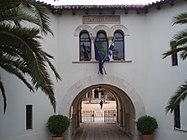File:Jesus Hominum Salvator by Andreas Ritzos (Byzantine museum).jpg

Original file (1,080 × 769 pixels, file size: 250 KB, MIME type: image/jpeg)
Captions
Captions
Summary edit
| Andreas Ritzos: Jesus Hominum Salvator
|
|||||||||||||||||||||||||||
|---|---|---|---|---|---|---|---|---|---|---|---|---|---|---|---|---|---|---|---|---|---|---|---|---|---|---|---|
| Artist |
artist QS:P170,Q330232 |
||||||||||||||||||||||||||
| Author |
Andreas Ritzos |
||||||||||||||||||||||||||
| Title |
English: Jesus Hominum Salvator |
||||||||||||||||||||||||||
| Object type |
painting object_type QS:P31,Q3305213 |
||||||||||||||||||||||||||
| Genre |
religious art |
||||||||||||||||||||||||||
| Description |
Depictions of the Crucifixion, the Resurrection and the Descent into Hell are combined in the initials of the abbreviated Latin inscription I(esus) H(ominum) S(alvator) (Jesus Saviour of Mankind), the emblem of the Franciscans. The Crucifixion is represented in the first two letters. In the letter S are depicted two successive scenes with the Risen Christ: The Anastasis, the Byzantine version of the Descent into Hell with the raising of the dead and the Western version of the Resurrection with Christ triumphant rising from the tomb. At the bottom on a black band with gold lettering, the Parakletike (Intercessionary) troparion, which is read at the early morning service on a Sunday, is inscribed. Laboratory examination of the icon showed that the troparion and the name of the artist were added later, but they are identical to the initial incriptions. The composition, unknown in either Byzantine or Western iconography, must be a creation of the Cretan artist Andreas Ritzos. This unique and original subject of the I H S is one of the most important examples of Italo-Cretan painting and shows the artist's familiarity with Western painting, as a result of the conditions prevailing in Venetian-ruled Crete in the 15th century. The icon is, possibly, the one mentioned in 1611 in the will of the noble Andreas Kornaros, who was a member of an old Veneto-Cretan family and a prominent scholar. If the identification of the icon is correct, Andreas Kornaros had bequeathed the icon in an important individual in Venice, emphasizing its importance. |
||||||||||||||||||||||||||
| Depicted people | |||||||||||||||||||||||||||
| Date |
between 1436 and 1492 date QS:P571,+1450-00-00T00:00:00Z/7,P1319,+1436-00-00T00:00:00Z/9,P1326,+1492-00-00T00:00:00Z/9 |
||||||||||||||||||||||||||
| Medium | egg tempera on wood | ||||||||||||||||||||||||||
| Dimensions |
height: 44.5 cm (17.5 in); width: 63.5 cm (25 in) dimensions QS:P2048,44.5U174728 dimensions QS:P2049,63.5U174728 |
||||||||||||||||||||||||||
| Collection |
institution QS:P195,Q1018775
|
||||||||||||||||||||||||||
| Accession number |
ΒΧΜ 01549 |
||||||||||||||||||||||||||
| References |
http://pandektis.ekt.gr/pandektis/handle/10442/84809 (English) |
||||||||||||||||||||||||||
| Source/Photographer | http://www.ebyzantinemuseum.gr/?i=bxm.en.exhibit&id=54 | ||||||||||||||||||||||||||
Licensing edit
| Public domainPublic domainfalsefalse |
|
This work is in the public domain in its country of origin and other countries and areas where the copyright term is the author's life plus 70 years or fewer.
| |
| This file has been identified as being free of known restrictions under copyright law, including all related and neighboring rights. | |
https://creativecommons.org/publicdomain/mark/1.0/PDMCreative Commons Public Domain Mark 1.0falsefalse
File history
Click on a date/time to view the file as it appeared at that time.
| Date/Time | Thumbnail | Dimensions | User | Comment | |
|---|---|---|---|---|---|
| current | 21:18, 9 February 2017 |  | 1,080 × 769 (250 KB) | Shakko (talk | contribs) | {{Information |Description=Jesus Hominum Salvator Depictions of the Crucifixion, the Resurrection and the Descent into Hell are combined in the initials of the abbreviated Latin inscription I(esus) H(ominum) S(alvator) (Jesus Saviour of Mankind), the... |
You cannot overwrite this file.
File usage on Commons
The following 4 pages use this file:
File usage on other wikis
The following other wikis use this file:
- Usage on en.wikipedia.org
- Usage on sk.wikipedia.org
- Usage on www.wikidata.org

